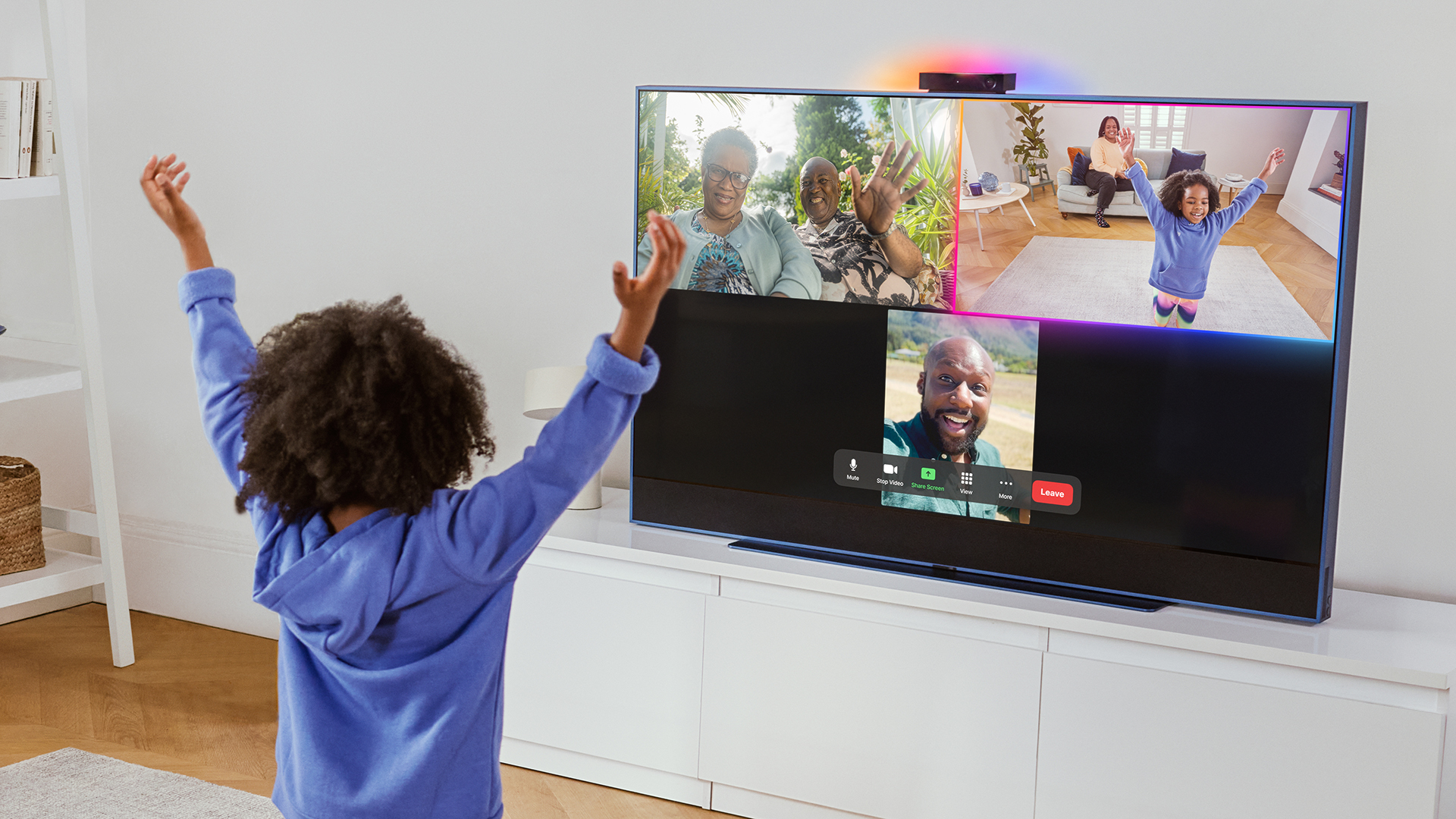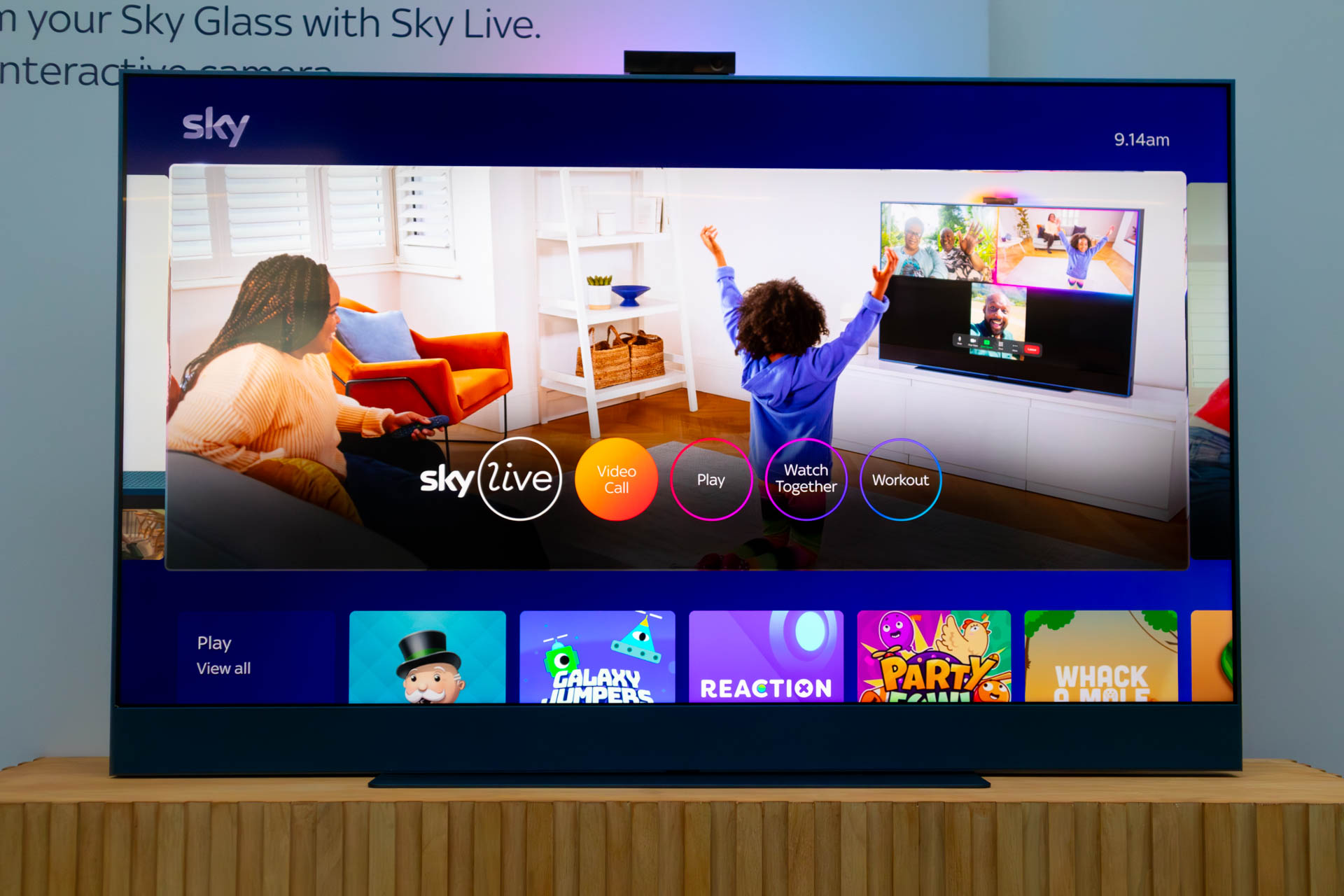Sky Live review: fitness first
The 'webcam for Sky Glass' is certainly niche, but if you'll utilise its fitness features often it could be for you


There's no doubt that Sky Live for Sky Glass is a niche product that won't be for everyone. But if you intend to use the Mvmnt fitness features consistently or watch your favourite sports matches with mates as you're unable to be there in person then it could prove to be an invaluable lifeline that's worth its (significant) cover price.
-
+
Mvmnt fitness apps the key reason to buy
-
+
Wide-angle of view for any space
-
+
Gaming entertainment for kids
-
-
It's expensive all considered
-
-
Tracking isn't quite perfect
-
-
Uses up an HDMI port
Why you can trust T3
If you're the owner of a Sky Glass telly and fancy upgrading its feature set to open up more interactive features then there's an exclusive official accessory that does just the job – and it's called Sky Live.
And, no, I'm not talking about Sky News or live football on Sky Sports – Sky Live is "a new interactive camera" that's exclusively for Sky Glass (so you cannot attach it to any of the best TVs on the market) to enable interactive fitness, games, collaborative calls and more.
Sounds a bit niche, though, doesn't it? Well, that's because it is: a TV with a camera attached sounds more like a big PC to me. But I've been living with Sky Live for some weeks to review it and decide whether, for most people, it'll be worth its not inconsiderable price tag...
Sky Live: Price & Availability
As I've already said, you'll need a Sky Glass in order for Sky Live to function. That TV subscription cost is anywhere from £156 to £252 a year minimum – depending on TV size, as 43-, 55-, and 65-inch options are available, as you can see in the shopping widget above – and could be much more when you add on additional services.
Sky Live can be obtained in two ways: you can buy it outright for £290, or you can add it as a subscription along with your Sky Glass from an extra £6 a month (I say 'from' as it's actually £12 a month on a 24-month contract) as you can see in the shopping widget below.
A little quick maths and you can probably see: the term of the 24- or 48-month subscription approximately equals the cost of the outright purchase. So there's no 'tax' whichever way you decide to buy – if you decide to buy at all.
Is Sky Live easy to install?

- Dimensions: 14.5 x 5 x 3.5cm
- 1x HDMI connection
- USB-C for power
While Sky Glass is laborious to setup compared to most of today's best TVs, adding Sky Live onto it afterwards is an absolute doddle. It took me a matter of minutes; honestly, it might take longer to open the product box than it does to install!
Get all the latest news, reviews, deals and buying guides on gorgeous tech, home and active products from the T3 experts
That's because Live, which is fairly large oblong-shape design for a webcam-style device, is designed to sit atop the Glass set – which it does so magnetically, so it's very easy to move and adjust (there's also an angle-adjustment included in the box) – plugs into one HDMI connection on the rear and another USB-C port for power.
On the one hand that's great, as it means avoiding using up yet another wall socket and trailing cables anywhere, as the device gets its power from that integrated USB cable. On the other hand the not-so-great aspect is having to lose an HDMI socket – which does make me half wonder why a camera product wasn't just integrated into Glass in the first instance.
Once plugged in, it's then a case of selecting the step-by-step Sky Live installation from the Sky home screen, which will guide you through best practices, positioning, and so forth, ensuring your camera has the best view and that you've got no obstructions in the way (as it needs to see you). Any apps hereafter are free to install, you'll just have to select whichever ones you want, from games to fitness and beyond.
What can Sky Live do? Features explained

- Workout w/ Mvmnt (cardio, strength, mobility, yoga/Pilates, meditation)
- Watch Together collaborative watch parties
- Play interactive gaming
- Zoom call integration
It's those apps that are by and large the most critical part of Sky Live. For me, I have relatively little use for this camera. But I can subjectively see that for the fitness aspects alone that if you're a dedicated user then this product could pay for itself.
I remember when I was young and interactive TV and even workout VHS tapes and DVDs were a pretty big deal. One of Sky Live's best features is Workout, which is like an up-to-date but more interactive equivalent of that. Mvmnt, as the various apps are called, each cover key areas – from cardio, to strength, to yoga/Pilates and more – and provide useful feedback based on your actions. There's a decent accompanying app too.
Because the Sky Live camera can 'see' you interactively in real-time, it can assess whether you're achieving Mvmnt's workout goals. It can't equate to a real coach, mind, in feeding back specific posture details, or whether you're doing everything perfectly, so it's somewhat more binary as a result. Still useful, though, as an actual coach will cost you a whole lot more than this.
Play is the next most interactive feature, with a variety of games available. They're fairly basic, though, from Fruit Ninja to Morph Thingy-Ma-Bobstacle Course, requiring specific arm-based gestures to gain responses and advance you through. I feel these are for younger players, fun as the Morph game's simple mechanics are to explore, but PS5 this is not.
Then there's Watch Together which, as you'll have probably guessed from the name, enables you and other Sky Live friends to collaboratively be on a call with you. It's no simple phone call, though, you can see one another on a floating widget on screen whilst, say, watching your favourite show. Zoom calls are much the same using the famed app, minus any associated TV content.
How does Sky Live perform?

- 4K UHD quality from 12MP camera
- Built-in motion-tracking technology
So just how well does all this work? Well, fine I s'pose. But a bit like how Sky Glass isn't the best-of-best TV you can buy – I say that in outright panel quality though; the actual Sky experience from its subscription packages to the electronic programme guide (EPG) and featured remote control are all great – there are some rough edges in certain areas of Live's performance and, in my opinion, its overall offering.
I cast my mind back to Facebook Portal. Remember how that went? Probably not, because it was discontinued. Its main rival? Google Nest Hub. But Google just removed the ability to make Zoom or Google Meet calls on that because, well, nobody was using it (Google described "underutilized" features being removed, which I see as meaning 'not worth paying the license and/or ongoing development costs to support'). Even other TV manufacturers have explored built-in cameras and, generally speaking, people don't use them a lot. Others fear the privacy factor too.
On the privacy front, however, Sky Live does feature a very prominent privacy button up top, which illuminates when pressed. And, unlike a built-in TV camera, it's also very easy to disconnect given it's just an HDMI and USB-C cable pull away from being out of use. That's why I think you've got to be really committed to wanting to use this camera day in and day out for those fitness activities – that's where the real worth of this product lies for a select audience.
However, the motion-tracking isn't akin to donning one of the best VR headsets and having pitch-perfect movement. It's admirable and you can see a real-time reflective version of what you're doing in a video and/or avatar form as applicable. But not all movements were perfectly registered in my experience and for this kind of money I want it to be that bit sharper – including in varying lighting conditions.
I can also see some value in Watch Together, especially if you're talking about live sports and you're not able to actually get together. The quality is decent, too, thanks to the high-resolution sensor's Ultra-HD resolution level.
Should I buy Sky Live? Verdict

So would I buy Sky Live? No, not personally. For me this is a three-star product maximum. It's an expensive webcam-like device that opens up interactive features that I'm simply unlikely to use – and given the history of sort-of similar products' failings/discontinuation I suspect other people will feel the same.
However, subjectively, I can see real value for a niche audience – hence the four-star score on this review – if you're going to be absolutely dedicated to the Mvmnt fitness features on a weekly basis or more, or you've no other way to watch your favourite sports matches with your mates. Then Sky Live could be a handy interactive lifeline for you – and that'll make it worth every penny.
Also consider
Sky Live is so specific – it only functions with Sky Glass and is only available in the UK – that the only real 'competitor' I can think of is buying Ring Fit Adventure for a Nintendo Switch for your fitness and future gaming possibilities. That won't cost you much overall, and while you certainly won't be able to watch the footie with your mates that way, but from a casual gaming/fitness angle it's a great alternative.

Mike is T3's Tech Editor. He's been writing about consumer technology for 15 years and his beat covers phones – of which he's seen hundreds of handsets over the years – laptops, gaming, TV & audio, and more. There's little consumer tech he's not had a hand at trying, and with extensive commissioning and editing experience, he knows the industry inside out. As the former Reviews Editor at Pocket-lint for 10 years where he furthered his knowledge and expertise, whilst writing about literally thousands of products, he's also provided work for publications such as Wired, The Guardian, Metro, and more.
